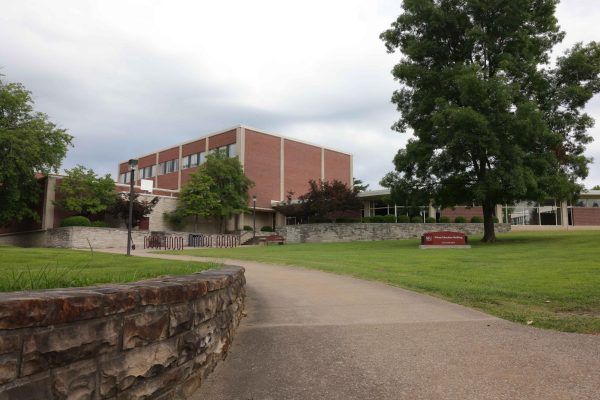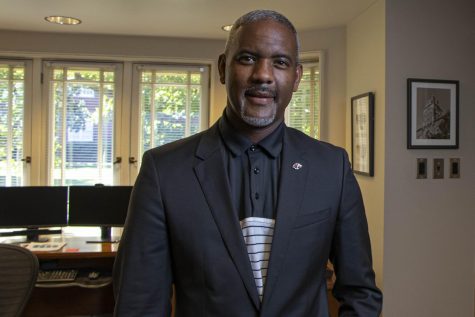Researchers say an ‘inverted classroom’ can improve educational outcomes for K-12 students
Developing research, spearheaded by Dr. Senetta Bancroft and Dr. Felicia Mensah, suggests that the Inverted Classroom model can better serve K-12 educational needs, particularly in majority Black and Latinx communities.
The Inverted Classroom model is an experimental method of education in which students are given information in segments then expected to deliberate amongst themselves and come to correct conclusions with the data before continuing rather than relying on lecture and rote memorization.
Bancroft said their research focuses on professional development for K-12 teachers.
Advertisement
“Specifically we want to support their ability to teach standards based science that is both using evidence-based practices that are also inclusive practices,” Bancroft said.
This is an area of research that particularly interests Mensah, a professor of education specializing in science teacher education at Columbia University in New York City.
Mensah has written and co-authored a number of books Critical Race Theory, a scientific approach to how racial biases within legal institutions can systematically disenfranchise minority individuals without open discrimination, and how education can be a tool to promote equity among disenfranchised students.
“I don’t think we do enough listening, we don’t have the resources, and we don’t ask for help when we need it,” Mensah said. “The role of the individual in the classroom for teachers is to come out and stop hiding and pretending you know it all. The main question to ask is ‘how can I support others?’”
Bancroft said her focus on minority communities stems from her understanding of how underfunded educational institutions adversely affect educational outcomes of the students that attend them. This is due to their relative difficulty in maintaining an adequate, effective educational staff.
Low-income minority communities are particularly vulnerable to this issue.
“It has to be a district that has the funds to really invest in supporting the teachers,” Bancroft said. “With professional development, it often takes anywhere from one to three years to move away from that traditional approach of lecturing… to basically move towards that more sense-making, active student approach.”
Advertisement*
Bancroft said having the funds to incentivize teachers to learn a new classroom model is the issue commonly faced when implementing new teaching strategies, particularly in underprivileged neighborhoods.
The goal of the research that Bancroft and Mensah have performed has been to change the way that teachers are taught to interact with students in a classroom setting.
“You are basically setting them up, asking questions, probing and slowly unfolding information so they can make sense of the evidence.” Bancroft said
According to the U.S. Census Bureau, in 2020, 13.1% of Black females over the age of 25 lacked a highschool diploma. This number is 16.7% among males, which is an increase of 2.5% compared to the 2010 Census, but still lies below the national average at 14.4% for females and 17.1% for males.
Educational attainment has been on the rise in Illinois overall over the past ten years, with the state boasting a higher percentage of high school graduates, at 88.3%, than the national average, at 87%.
On a county level, low income communities like those found in Kane and Randolph counties find themselves underperforming academically as well, with 16.9% and 15.5% of their populations respectively lacking a high school diploma.
Bancroft said funding affects the lack of resources available to students, particularly within scientific fields like chemistry.
“We can explain things pretty well with science, so being able to touch and feel and observe those materials is important, and it’s important to be able to do it safely,” Bancroft said.
Bancroft said the emotional investment teachers give to students to ensure their academic success is paramount to a good educational experience. However, schools that lack adequate funding can find it difficult to retain teachers that are willing to put in the time and emotional labor to help struggling students.
Mensah teaches a doctoral level course on critiquing teacher education. “The basis of the course is to develop racial literacy. What does it mean to think about race and racism in a classroom setting,” she said.
The main difficulty of the model in the classroom setting is ensuring that students have proper guidance in these inverted classrooms.
Increasing the number of minority teachers in our education system proves to be beneficial not just for all students, but especially other minority students, Mensah said. These teachers serve as role models for students as well as having first hand knowledge of the struggles faced by their minority pupils, allowing them to better serve the student population.
Mensah said larger, systemic issues heavily impact the way educators are able to serve their students. Community health and welfare, lack of social and emotional learning, and traumas forced upon students both before and after the COVID-19 pandemic all serve to make education less attainable for economically disenfranchised students.
Addressing these issues will require a multifaceted approach, but the recent uncovering of the flaws in our teaching system, laid bare by the pandemic and its impact on schools, gives us ample opportunity for reform, Mensah said.
In a research article published in 2019, titled Finding Voice and Passion: Critical Race Theory Methodology in Science Teacher Education, Mensah concludes that educational and emotional support for teachers of color is paramount to ensuring, sustaining and promoting Black teachers, particularly Black female teachers.
“The multidimensionality of Black women’s experiences asmultiply burdened suggests their experiences are distinct, and that their experience of discrimination and disadvantages are similar to and different from those of White women and Black men,” Mensah said.
In the article, Mensah highlights the need for an intersectional approach to the problems facing minority teachers.
“Intersectionality foregrounds how systemic oppressions work in the lives of teachers of color, and it adds to the complexity of understanding race and other social markers,” Mensah said.“Building a future pool of Black teachers comes from the preparation of preservice teachers of color. Therefore, their experiences in teacher education represents an area of growing importance as well.” Mensah said.
Advertisement










